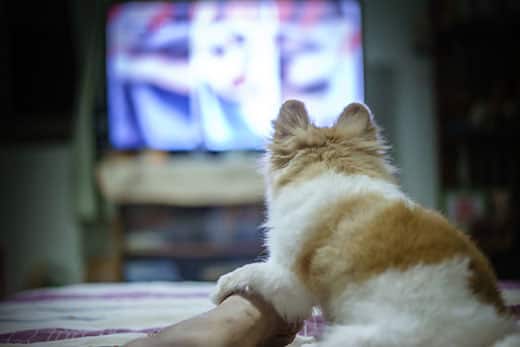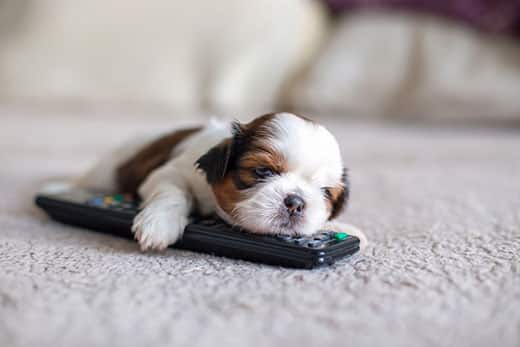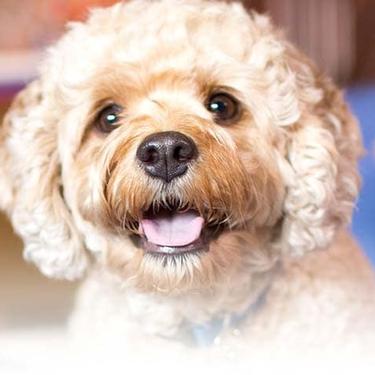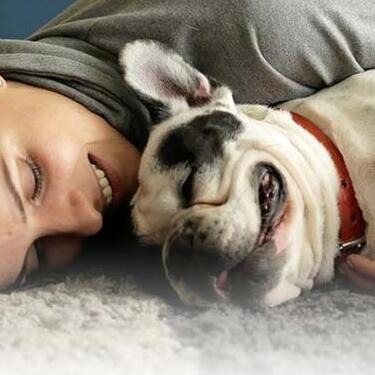
-
Find the right food for your pet
Take this quiz to see which food may be the best for your furry friend.
Find the right food for your pet
Take this quiz to see which food may be the best for your furry friend.
Featured products
 Adult Healthy Cuisine Roasted Chicken, Carrots & Spinach Stew Dog Food
Adult Healthy Cuisine Roasted Chicken, Carrots & Spinach Stew Dog FoodDelicious roasted chicken paired with tender vegetables in a succulent stew
Shop Now Adult 7+ Perfect Digestion Chicken, Whole Oats & Brown Rice Recipe Dog Food
Adult 7+ Perfect Digestion Chicken, Whole Oats & Brown Rice Recipe Dog FoodScience Diet's breakthrough nutrition supports ultimate digestive well-being & healthy microbiome for dogs age 7+
Shop Now Small & Mini Savory Stew with Chicken & Vegetables Dog Food
Small & Mini Savory Stew with Chicken & Vegetables Dog FoodA delicious complement to the nutrition of Science Diet Small & Mini 7+ dog food
Shop NowFeatured products
 Adult Savory Entrée Can Variety Pack Cat Food
Adult Savory Entrée Can Variety Pack Cat FoodPrecisely balanced nutrition with the delicious taste of savory minced chicken to help fuel the energy needs of cats during the prime of their life
Shop Now Adult 7+ Tender Tuna Dinner Cat Food
Adult 7+ Tender Tuna Dinner Cat FoodWith delicious chunks in a decadent gravy
Shop Now Adult 7+ Senior Vitality Chicken & Vegetable Stew Cat Food
Adult 7+ Senior Vitality Chicken & Vegetable Stew Cat FoodImproves Everyday Ability to Get Up & Go
Shop Now -
Dog
- Dog Tips & Articles
-
Health Category
- Weight
- Food & Environmental Sensitivities
- Urinary
- Digestive
- Joint
- Kidney
-
Life Stage
- Puppy Nutrition
- Adult Nutrition
- Senior Nutrition
Cat
- Cat Tips & Articles
-
Health Category
- Weight
- Skin & Food Sensitivities
- Urinary
- Digestive
- Kidney
-
Life Stage
- Kitten Nutrition
- Adult Nutrition
Featured articles
 Do Dogs and Cats have Belly Buttons?
Do Dogs and Cats have Belly Buttons?Learn whether cats & dogs have belly buttons like humans, what the function is, and if there are any health concerns associated with it.
Read More Does My Pet Hate Me?
Does My Pet Hate Me?Learn tips for bonding with your pet if you've ever thought, 'My dog doesn't like me, or 'Why do I have a standoffish cat?'
Read More Why Are Dogs and Cats So Cute?
Why Are Dogs and Cats So Cute?If waggy puppy dog tails and furry kitten yawns make you swoon, you're not alone. Why are cats so cute? And, dogs too! Let's find out!
Read More -


Picture this: You're snuggled in for the evening with your dog at your feet, as you catch up on your favorite series, you notice your pup perk up, tilt their head and stare at the TV screen with intent. Then, they bark and wag their tail. They're clearly happy, but what's going on? Do dogs watch TV? Do dogs prefer certain shows? And maybe more importantly, do dogs understand TV?
To answer these questions, we're digging into the science behind a dog's vision and how they process what they see.

Do Dogs Watch TV? And What Do They See?
It's not uncommon for dogs to take an interest in nature shows featuring animals moving about, according to Stanley Coren, PhD, a psychology professor and author of several dog books, including "How Dogs Think" and "The Intelligence of Dogs." On-screen animals must be real to trigger a reaction, though. Cartoon critters just don't spark the interest of our canine friends, Coren says. This is a testament to a dog's ability to accurately interpret what they see.
Do dogs watch TV? Yes, but a pup's vision differs from that of a human. Christopher Pirie, a veterinary ophthalmologist at Cummings School of Veterinary Medicine at Tufts University, says that a dog with normal vision sees at 20/60 compared to our 20/20 rating. So if you're watching TV from 6 feet away, your dog would have to be within 2 feet of the screen to see what you see. The farther they are from the screen, the grainer and fuzzier the video will be. This could be why they lie in front of the TV so often.
Dog eyes also process colors differently than human eyes. For instance, we have three types of color-detecting cells inside our retinas. Dogs only have two, which means they perceive fewer colors with less saturation than the average human. Your furry friend's color range includes dull blue, yellow and green tones. Although limited, this range of vision dispels the notion that pets can only see in black and white.
Veterinary Vision, a California-based pet clinic focused on eye health, says that a dog's ability to see stems from their field of view and several other factors, including their ability to:
- Judge distances
- Detect motion
- Differentiate colors
These abilities vary among dogs based on their health, age and breed. For example, a pup with cataracts won't see clearly; their vision may deteriorate to the point where they only see differences between light and dark, not colors. When this happens, their other senses like smell and hearing will shift into high gear to help them understand what's going on around them. Therefore, if your dog has cataracts and still perks up during movie night, it may be due to their hearing rather than their vision.
What Are Dogs Thinking While They Watch TV?
Now, let's put all this information together, within the context of what your dog is responding to on screens. We know that dogs can see specific colors, hear sounds from the TV and are attracted to movement. They respond to these cues more readily, but is this a good thing? Sure! Just like us, our doggie friends like a little TV entertainment.
In an article for The New York Times, a veterinarian, a psychology professor, and a series of others discuss whether or not dogs should watch TV. It concludes that sitting in front of a screen is not a replacement for outdoor play and exercise, but that it's fine on occasion, especially if your dog experiences separation anxiety. Leaving a TV on while you're away can stimulate your pet's mind, helping them ward off boredom and keeping them happier and relaxed overall.



Tasty Tips
Try This Simple Experiment With Your Dog
Wondering if your pup has a favorite TV show or movie? Put them on the same level as the screen, allowing them to get as close as they want. You could also place a tablet near your dog's kennel or allow them to rest on a chair that sits at the same height as your TV.
Next, pick a show that features animals being active. These could be dogs, cats, squirrels, birds or any creatures your pup finds intriguing in real life. For the most variety, consider documentaries or channels that focus on animal content. Remember, pets aren't keen on cartoons, so opt for shows featuring real animals. Pay close attention to the colors on the screen. Since dogs see blues, yellows and greens more vividly, you may notice a spike in their attention when they see outdoor scenes with blue skies and green grass. Or, they may perk up when a dog on TV plays with a yellow toy.
Observe your dog's physical reactions and behaviors. Are their eyes following the movement on the screen? Is their tail wagging? Are they growling or barking? Are they pacing? Are they suddenly jumping up and getting more interested in the show? Are they looking to you for reassurance? When you see happy responses, take note of what's on TV. If you notice irritation, pay attention to that, too. Just like humans, dogs have preferences for what they do and do not want to see. Choose shows that elicit happiness and your dog will be one content TV watcher — just like you.
So, do dogs watch TV? And do dogs understand TV? They sure do! Watching a show together can be a fun, new way to bond with your canine companion. After a long dog walk or busy puppy play date, why not curl up with your pup and watch something you both enjoy? It's a great way to both relax after a busy day and spend some quality time together. And if your dog doesn't appear interested in television, that is okay too. Simply snuggling on the couch together may be more than enough for both of you.


Angela Tague is a pet mom and writer living in the Midwest. When she's not making a mess in the kitchen, exploring nature trails with her dog, or attending a yoga workshop, she's writing full-time for multiple lifestyle and technology brands. You can find her on Twitter and LinkedIn @AngelaTague.
Related products

Delicious braised beef paired with tender vegetables in a succulent stew

Delicious roasted chicken paired with tender vegetables in a succulent stew

Science Diet's breakthrough nutrition supports ultimate digestive well-being & healthy microbiome for dogs age 7+

A delicious complement to the nutrition of Science Diet Small & Mini 7+ dog food
Related articles

Hill's Science Diet Small & Toy Breed dog foods are designed to meet the nutritional needs for your small dog at every life stage. Learn more here.

Learn about choosing the right food for your mature or older dog, ensuring he receives the correct balance of nutrition.

Large and giant breed puppies have different nutritional needs than other dogs. Learn how to provide the special care they need to grow up big and strong.

Your dog's coat and skin are a big part of your dog's overall health. Ensure you keep your dog's coat healthy, by following these simple tips.

Put your dog on a diet without them knowing
Our low calorie formula helps you control your dog's weight. It's packed with high-quality protein for building lean muscles, and made with purposeful ingredients for a flavorful, nutritious meal. Clinically proven antioxidants, Vitamin C+E, help promote a healthy immune system.
Put your dog on a diet without them knowing
Our low calorie formula helps you control your dog's weight. It's packed with high-quality protein for building lean muscles, and made with purposeful ingredients for a flavorful, nutritious meal. Clinically proven antioxidants, Vitamin C+E, help promote a healthy immune system.

